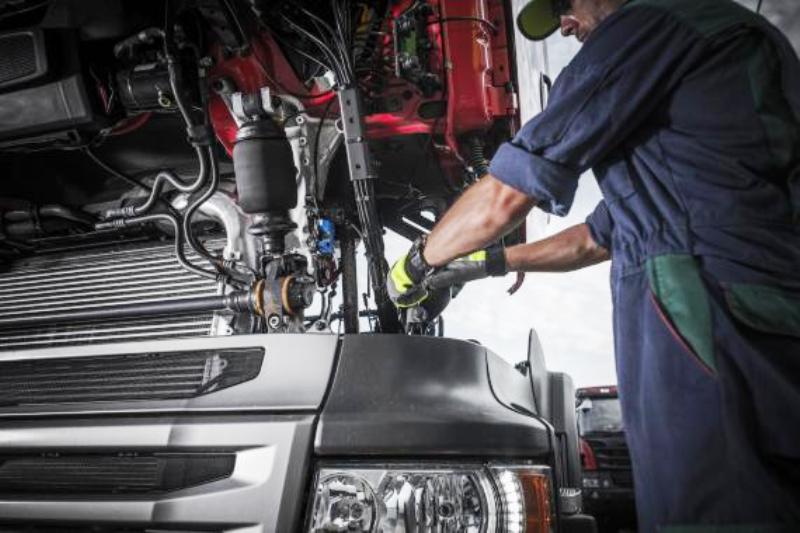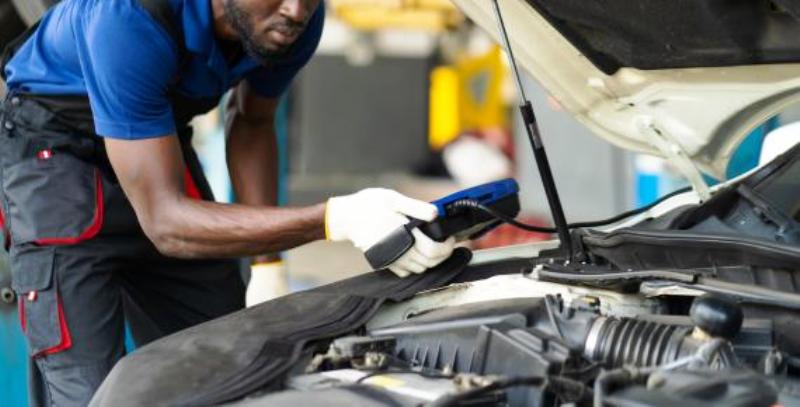Contents
– How the starter works
– Step 1: Identify starter failure symptoms
– Step 2: Check the battery
– Step 3: Check the solenoid supply
– Step 4: Check the starter’s main supply
– Step 5: Remove the starter and confirm your diagnosis
Replacing a starter is often a complex operation due to its inaccessibility in the engine. That’s why it’s essential to test the starter beforehand to confirm it’s not working correctly.
How does the starter motor work?
The starter motor is an auxiliary electric motor whose role is to drive the engine to start it.
It can be broken down into 3 functional groups:
– The main electric motor is the central part of the device, which drives the car’s internal combustion engine. To ensure the rotation of the machine at a minimum speed of 300 rpm, it is oversized and consumes a lot of energy: it absorbs an electrical current of 300 to 600 amps for a light vehicle;
– The solenoid is a specific integrated relay that allows the remote starter to be activated by the key switch.
– The mechanical system consists of a fork attached to the solenoid, which operates a freewheel on the starter shaft, attached to a pinion (similar to the rear pinion on a bicycle).
A closer look at how the starter motor works
When the driver turns the car’s key switch to the start position, it sends an electrical voltage to the starter motor. This voltage, through the solenoid, establishes the main power supply to the electric motor through a large cable (16-35 mm2 ) connected to the battery.
As the starter motor starts to rotate, the solenoid simultaneously activates the fork in translation, causing the movement of the freewheel and its pinion, which meshes with the teeth of the engine flywheel’s teeth attached to the crankshaft. The heat engine is driven.
1. Identify the symptoms of starter failure
A possible starter failure may have the following symptoms.
Insufficient engine speed at start-up
– The battery is insufficiently charged or defective.
– Damage to the electric motor of the starter or worn contact brushes.
The starter only makes a clattering sound
The starter is at fault, and its solenoid is defective.
There is no motor rotation and no audible noise
– The power supply to the solenoid is faulty (or the key switch and the power wire).
– If the battery light is fading, the starter, battery or starter power cables (the battery + terminal cable and the ground cable to the body and engine/transmission assembly) may be to blame.
You will therefore need a car mechanic.
2. Check the battery
Before investigating further, the first thing to do is to check the battery. With a multimeter connected to its terminals, read its voltage, which should not be less than 13 volts.
If not, charge or replace it. Seeker Motorsport can help you with that.
3. Check the power supply to the solenoid
– Connect a test light between the power supply lead to the solenoid and a previously tested ground (engine body or battery ground terminal).
– Turn the ignition key on:
o If the light remains off, the starter is not the cause of the fault. Check the power fuse, the key switch and the power line (there are often intermediate connectors on this line which may be the cause).
o If the lamp comes on, the starter, or its main supply, is the cause.
4. Check the starter’s main power supply

– Check the condition of the battery terminals and, if they are sulphated (white deposit), clean them with water and scrape their surface with a metal blade or a specific cleaning tool.
– Check the tightness and condition of the positive cable connection to the solenoid.
– Check the ground line: in cars, the current return is through the vehicle structure (hence the term “ground”). The drivetrain, a source of parasitic vibrations, is connected to the car’s chassis by silent blocks that isolate it electrically.
Therefore, braids or ground cables connect the engine to the battery and bodywork. It is consequently vital to ensure that these lines are in good condition and that the starter motor is working correctly. If these checks are good, consider removing the starter.
5. Remove the starter and confirm your diagnosis
Before replacing the starter or dismantling it, test it once removed (immobilise it by putting its nose in a vice):
– Connect jumper cables between the battery and the starter (+ to solenoid connection and – to starter earth).
– Supply the + on the solenoid control via a jumper wire connected to the battery.
You should see the same malfunctions as with the starter in place on the vehicle.
Materials needed to test a starter
Starter cables
Multimeter

